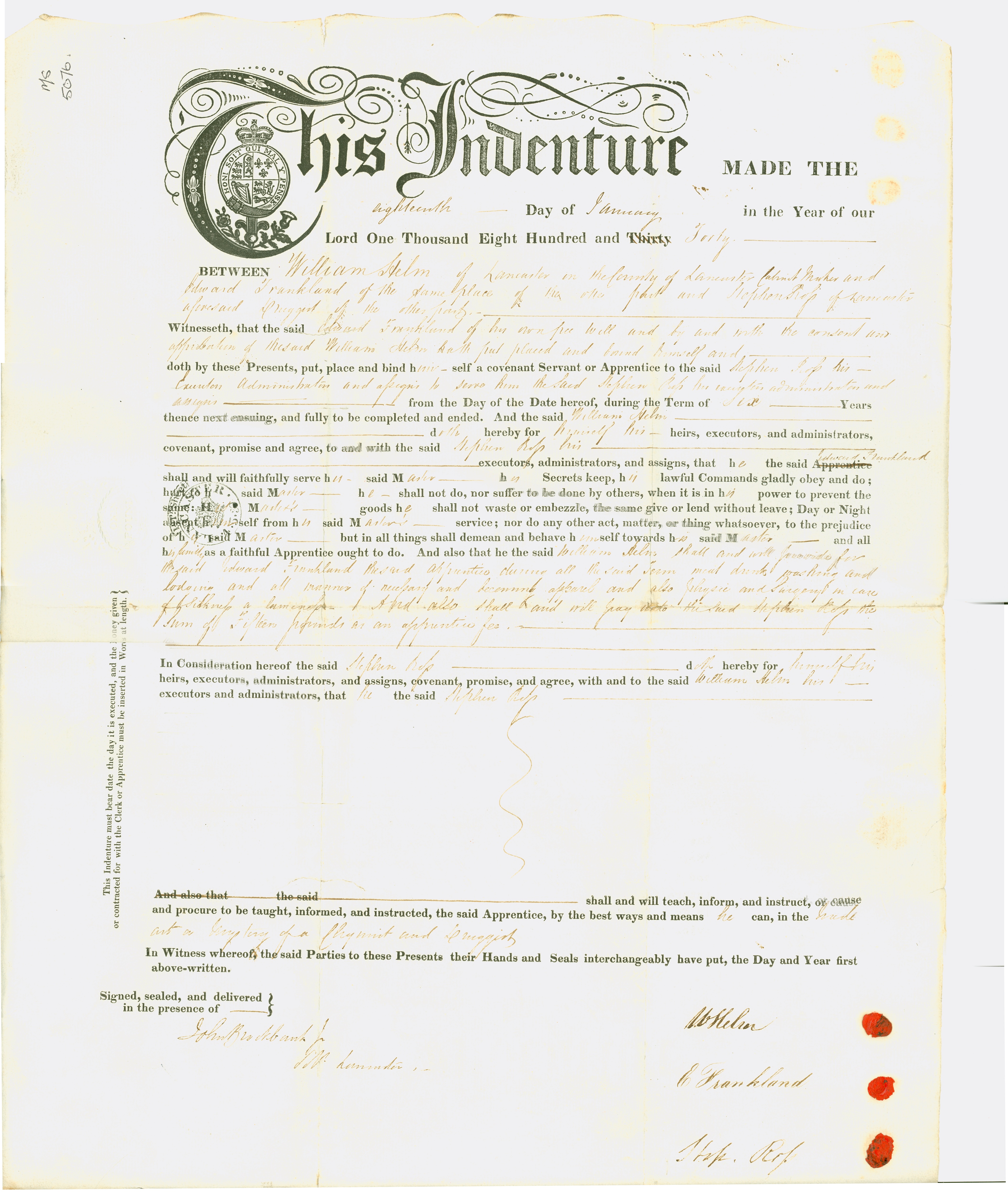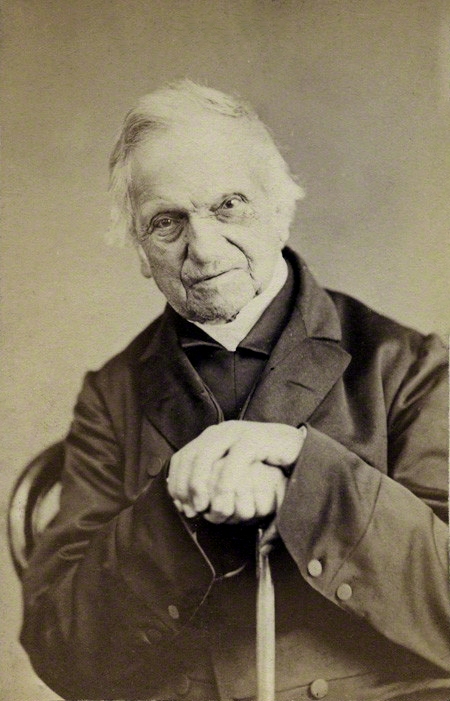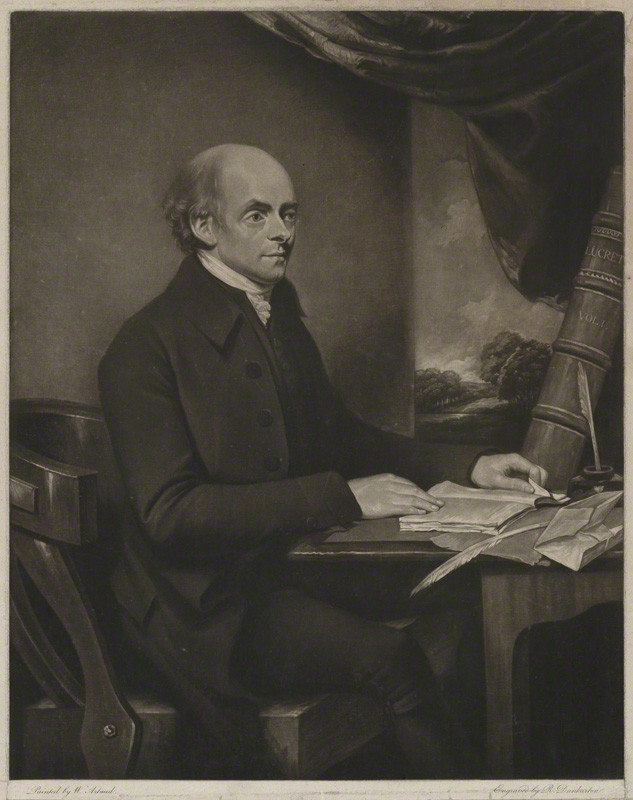|
Hardy Progeny Of The North
The phrase "hard progeny of the North" is a misquotation from the autobiography (1792) of Gilbert Wakefield. He wrote that "It is observed at Cambridge, and is generally true, that the hardy progeny of the North, from Cumberland, Westmoreland, and the remoter parts of Yorkshire, are usually the profoundest proficients in Mathematics and Philosophy." An exhibition at Lancaster University in 1976 took it as title. Background The "hard progeny" were educated in the region's grammar schools A grammar school is one of several different types of school in the history of education in the United Kingdom and other English-speaking countries, originally a school teaching Latin, but more recently an academically oriented secondary school ... which were small and typically situated in rural market towns. In an era prior to the dominance of the great public schools, grammar schools were the most important source of entrants to Oxford and Cambridge universities, at least of entrants wi ... [...More Info...] [...Related Items...] OR: [Wikipedia] [Google] [Baidu] |
Misquotation
A quotation is the repetition of a sentence, phrase, or passage from speech or text that someone has said or written. In oral speech, it is the representation of an utterance (i.e. of something that a speaker actually said) that is introduced by a quotative marker, such as a verb of saying. For example: John said: "I saw Mary today". Quotations in oral speech are also signaled by special prosody in addition to quotative markers. In written text, quotations are signaled by quotation marks. Quotations are also used to present well-known statement parts that are explicitly attributed by citation to their original source; such statements are marked with ( punctuated with) quotation marks. Quotations are often used as a literary device to represent someone's point of view. They are also widely used in spoken language when an interlocutor wishes to present a proposition that they have come to know via hearsay. As a literary device A quotation can also refer to the repeated use of unit ... [...More Info...] [...Related Items...] OR: [Wikipedia] [Google] [Baidu] |
William Whewell
William Whewell ( ; 24 May 17946 March 1866) was an English polymath, scientist, Anglican priest, philosopher, theologian, and historian of science. He was Master of Trinity College, Cambridge. In his time as a student there, he achieved distinction in both poetry and mathematics. The breadth of Whewell's endeavours is his remarkable feature. In a time of increasing specialization, Whewell belonged in an earlier era when natural philosophers investigated widely. He published work in mechanics, physics, geology, astronomy, and economics, while also composing poetry, writing a Bridgewater Treatise, translating the works of Goethe, and writing sermons and theological tracts. In mathematics, Whewell introduced what is now called the Whewell equation, defining the shape of a curve without reference to an arbitrarily chosen coordinate system. He also organized thousands of volunteers internationally to study ocean tides, in what is now considered one of the first cit ... [...More Info...] [...Related Items...] OR: [Wikipedia] [Google] [Baidu] |
19th-century Scottish Scientists
The 19th (nineteenth) century began on 1 January 1801 ( MDCCCI), and ended on 31 December 1900 ( MCM). The 19th century was the ninth century of the 2nd millennium. The 19th century was characterized by vast social upheaval. Slavery was abolished in much of Europe and the Americas. The First Industrial Revolution, though it began in the late 18th century, expanding beyond its British homeland for the first time during this century, particularly remaking the economies and societies of the Low Countries, the Rhineland, Northern Italy, and the Northeastern United States. A few decades later, the Second Industrial Revolution led to ever more massive urbanization and much higher levels of productivity, profit, and prosperity, a pattern that continued into the 20th century. The Islamic gunpowder empires fell into decline and European imperialism brought much of South Asia, Southeast Asia, and almost all of Africa under colonial rule. It was also marked by the collapse of the l ... [...More Info...] [...Related Items...] OR: [Wikipedia] [Google] [Baidu] |
18th-century Scottish Scientists
The 18th century lasted from January 1, 1701 ( MDCCI) to December 31, 1800 ( MDCCC). During the 18th century, elements of Enlightenment thinking culminated in the American, French, and Haitian Revolutions. During the century, slave trading and human trafficking expanded across the shores of the Atlantic, while declining in Russia, China, and Korea. Revolutions began to challenge the legitimacy of monarchical and aristocratic power structures, including the structures and beliefs that supported slavery. The Industrial Revolution began during mid-century, leading to radical changes in human society and the environment. Western historians have occasionally defined the 18th century otherwise for the purposes of their work. For example, the "short" 18th century may be defined as 1715–1789, denoting the period of time between the death of Louis XIV of France and the start of the French Revolution, with an emphasis on directly interconnected events. To historians who expand t ... [...More Info...] [...Related Items...] OR: [Wikipedia] [Google] [Baidu] |
19th-century British Scientists
The 19th (nineteenth) century began on 1 January 1801 ( MDCCCI), and ended on 31 December 1900 ( MCM). The 19th century was the ninth century of the 2nd millennium. The 19th century was characterized by vast social upheaval. Slavery was abolished in much of Europe and the Americas. The First Industrial Revolution, though it began in the late 18th century, expanding beyond its British homeland for the first time during this century, particularly remaking the economies and societies of the Low Countries, the Rhineland, Northern Italy, and the Northeastern United States. A few decades later, the Second Industrial Revolution led to ever more massive urbanization and much higher levels of productivity, profit, and prosperity, a pattern that continued into the 20th century. The Islamic gunpowder empires fell into decline and European imperialism brought much of South Asia, Southeast Asia, and almost all of Africa under colonial rule. It was also marked by the collapse of the large ... [...More Info...] [...Related Items...] OR: [Wikipedia] [Google] [Baidu] |
18th-century British Scientists
The 18th century lasted from January 1, 1701 ( MDCCI) to December 31, 1800 ( MDCCC). During the 18th century, elements of Enlightenment thinking culminated in the American, French, and Haitian Revolutions. During the century, slave trading and human trafficking expanded across the shores of the Atlantic, while declining in Russia, China, and Korea. Revolutions began to challenge the legitimacy of monarchical and aristocratic power structures, including the structures and beliefs that supported slavery. The Industrial Revolution began during mid-century, leading to radical changes in human society and the environment. Western historians have occasionally defined the 18th century otherwise for the purposes of their work. For example, the "short" 18th century may be defined as 1715–1789, denoting the period of time between the death of Louis XIV of France and the start of the French Revolution, with an emphasis on directly interconnected events. To historians who expand ... [...More Info...] [...Related Items...] OR: [Wikipedia] [Google] [Baidu] |
William Turner (anatomist)
Sir William Turner (7 January 1832, in Lancaster – 15 February 1916, in Edinburgh) was an English anatomist and was the Principal of the University of Edinburgh from 1903 to 1916. Life Turner was born in Lancaster the son of William Turner a relatively rich cabinetmaker, and his wife, Margaret Aldren. He was educated at various private schools, and then apprenticed to a local physician, Dr Christopher Johnston. He afterwards studied medicine at St. Bartholomew's hospital, and graduated M.B. from the University of London in 1857. In 1854 he became senior demonstrator in anatomy at the University of Edinburgh. He lived in rooms at Old College. In 1861 he was elected a Fellow of the Royal Society of Edinburgh, his proposer being John Goodsir. He served as the society's secretary from 1869 to 1891, twice as vice president from 1891 to 1895 and from 1897 to 1903, and as president from 1908 to 1913. He won the society's Neill Prize for 1868 to 1871 and the Keith Prize for ... [...More Info...] [...Related Items...] OR: [Wikipedia] [Google] [Baidu] |
Edward Frankland
Sir Edward Frankland, (18 January 18259 August 1899) was an English chemist. He was one of the originators of organometallic chemistry and introduced the concept of combining power or valence. An expert in water quality and analysis, he was a member of the second royal commission on the pollution of rivers, and studied London's water quality for decades. He also studied luminous flames and the effects of atmospheric pressure on dense ignited gas, and was one of the discoverers of helium. Biography Edward Frankland was born in Catterall, Lancashire and baptised at Churchtown, Lancashire on 20 February 1825. As his baptismal record shows, his birth was illegitimate. His mother, Margaret "Peggy" Frankland, later married William Helm, a Lancaster cabinet-maker. "His illegitimacy cast a shadow over all his life since he was pledged to silence as to the identity of his natural father, though a handsome annuity was paid to his mother". From age 3 to 8 Edward lived and was e ... [...More Info...] [...Related Items...] OR: [Wikipedia] [Google] [Baidu] |
Richard Owen (geologist)
Richard Dale Owen (January 6, 1810 – March 25, 1890) was a Scottish-born geologist, natural scientist, educator, and American military officer who arrived in the United States in 1828 and settled at New Harmony, Indiana. Owen, who was trained as a natural scientist and physician, served as an infantry officer in the U.S. Army during the Mexican–American War and the American Civil War. After the Civil War, Owen taught at Indiana University for fifteen years (1864–79) and chaired its natural science department. While retaining his faculty position at IU, Owen also served as Purdue University's first president (1872–74). During the interwar years, Owen taught natural science at the Western Military Institute in Kentucky and after its merger with the University of Nashville in Tennessee. In addition, Owen assisted his brother, David Dale Owen, with early geological studies of the Northwest Territory. In 1860 Richard Owen succeeded his brother to become Indiana's ... [...More Info...] [...Related Items...] OR: [Wikipedia] [Google] [Baidu] |
Adam Sedgwick
Adam Sedgwick (; 22 March 1785 – 27 January 1873) was a British geologist and Anglican priest, one of the founders of modern geology. He proposed the Cambrian and Devonian period of the geological timescale. Based on work which he did on Welsh rock strata, he proposed the Cambrian period in 1835, in a joint publication in which Roderick Murchison also proposed the Silurian period. Later in 1840, to resolve what later became known as the Great Devonian Controversy about rocks near the boundary between the Silurian and Carboniferous periods, he and Murchison proposed the Devonian period. Though he had guided the young Charles Darwin in his early study of geology and continued to be on friendly terms, Sedgwick was an opponent of Darwin's theory of evolution by means of natural selection. He strongly opposed the admission of women to the University of Cambridge, in one conversation describing aspiring female students as "nasty forward minxes." Life and career Sedgwick ... [...More Info...] [...Related Items...] OR: [Wikipedia] [Google] [Baidu] |
Gilbert Wakefield
Gilbert Wakefield (1756–1801) was an English scholar and controversialist. He moved from being a cleric and academic, into tutoring at dissenting academies, and finally became a professional writer and publicist. In a celebrated state trial, he was imprisoned for a pamphlet critical of government policy of the French Revolutionary Wars; and died shortly after his release. Early life and background He was born 22 February 1756 in Nottingham, the third son of the Rev. George Wakefield, then Rector (ecclesiastical), rector of St Nicholas' Church, Nottingham but afterwards at Kingston-upon-Thames, and his wife Elizabeth. He was one of five brothers, who included George, a merchant in Manchester. His father was from Rolleston, Staffordshire, and came to Cambridge in 1739 as a sizar. He had support in his education from the Hardinge family, of Melbourne, Derbyshire, his patrons being Nicholas Hardinge and his physician brother. In his early career he was chaplain to Margaret Newt ... [...More Info...] [...Related Items...] OR: [Wikipedia] [Google] [Baidu] |
John Dawson (surgeon)
John Dawson (1734 – 19 September 1820) was both an English mathematician and physician. He was born at Raygill in Garsdale, then in the West Riding of Yorkshire, where "Dawson's Rock" celebrates the site of his early thinking about conic sections. After learning surgery from Henry Bracken of Lancaster, he worked as a surgeon in Sedbergh for a year, then went to study medicine at Edinburgh, walking 150 miles there with his savings stitched into his coat. Despite a very frugal lifestyle, he was unable to complete his degree, and had to return to Garsdale until he earned enough as a surgeon and as a private tutor in Mathematics at Sedbergh School to enable him to complete his MD from London in 1765. Dawson published ''The Doctrine of Philosophical Necessity Briefly Invalidated'' in 1781, arguing against Joseph Priestley's doctrine of '' Philosophical Necessity'', but his main skill was in Mathematics. He was a private tutor to many undergraduates at the University of Cambridge ... [...More Info...] [...Related Items...] OR: [Wikipedia] [Google] [Baidu] |









